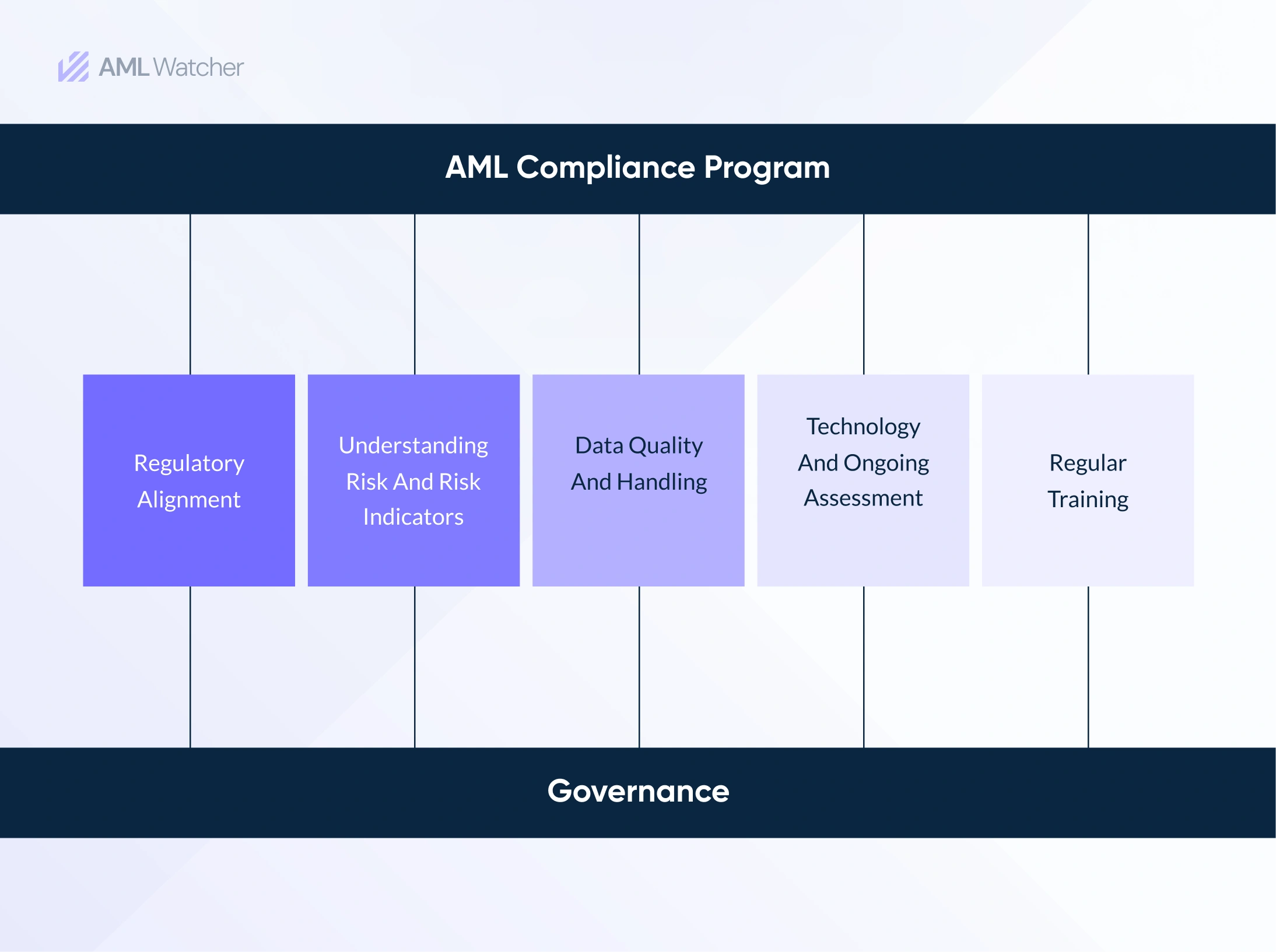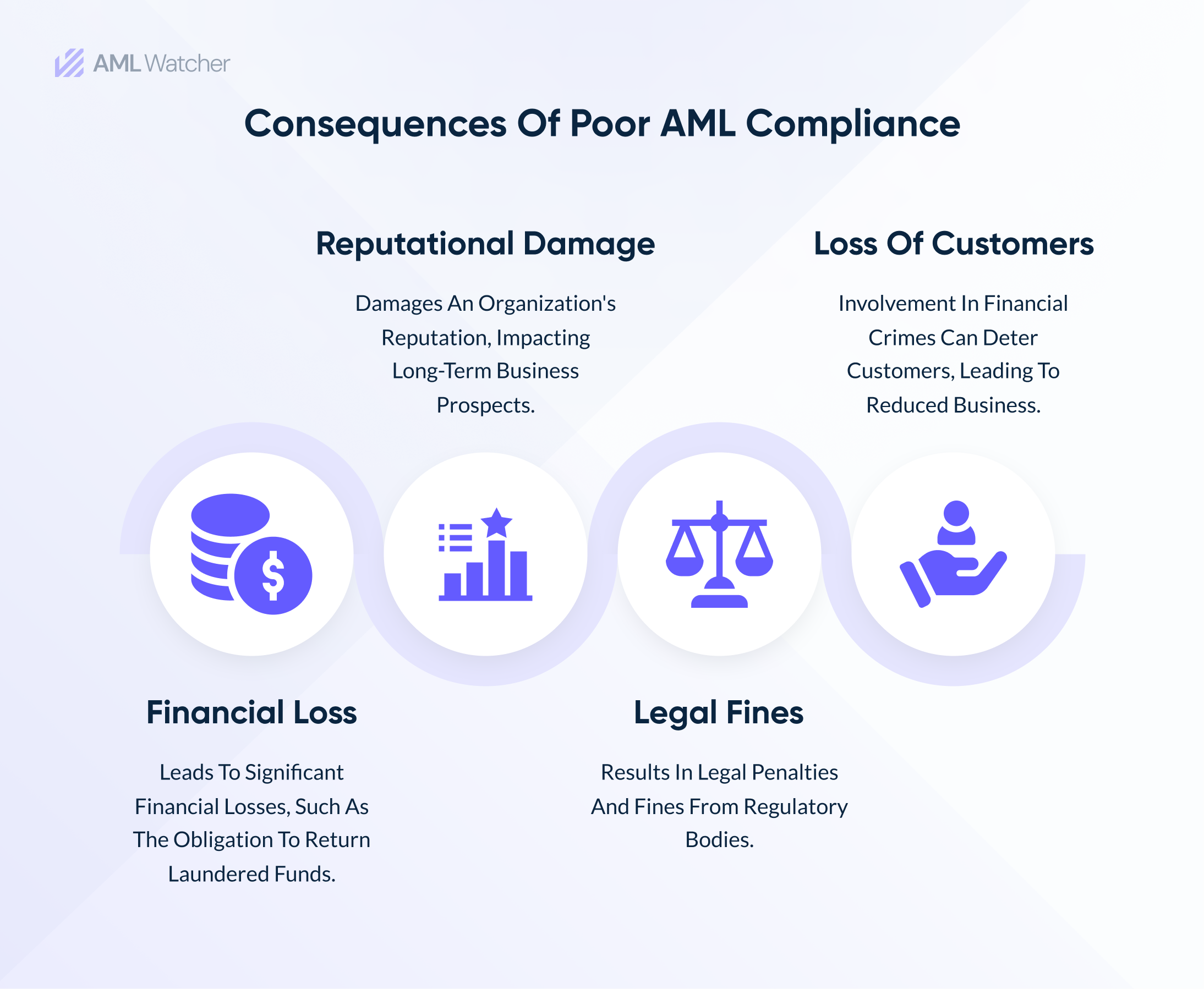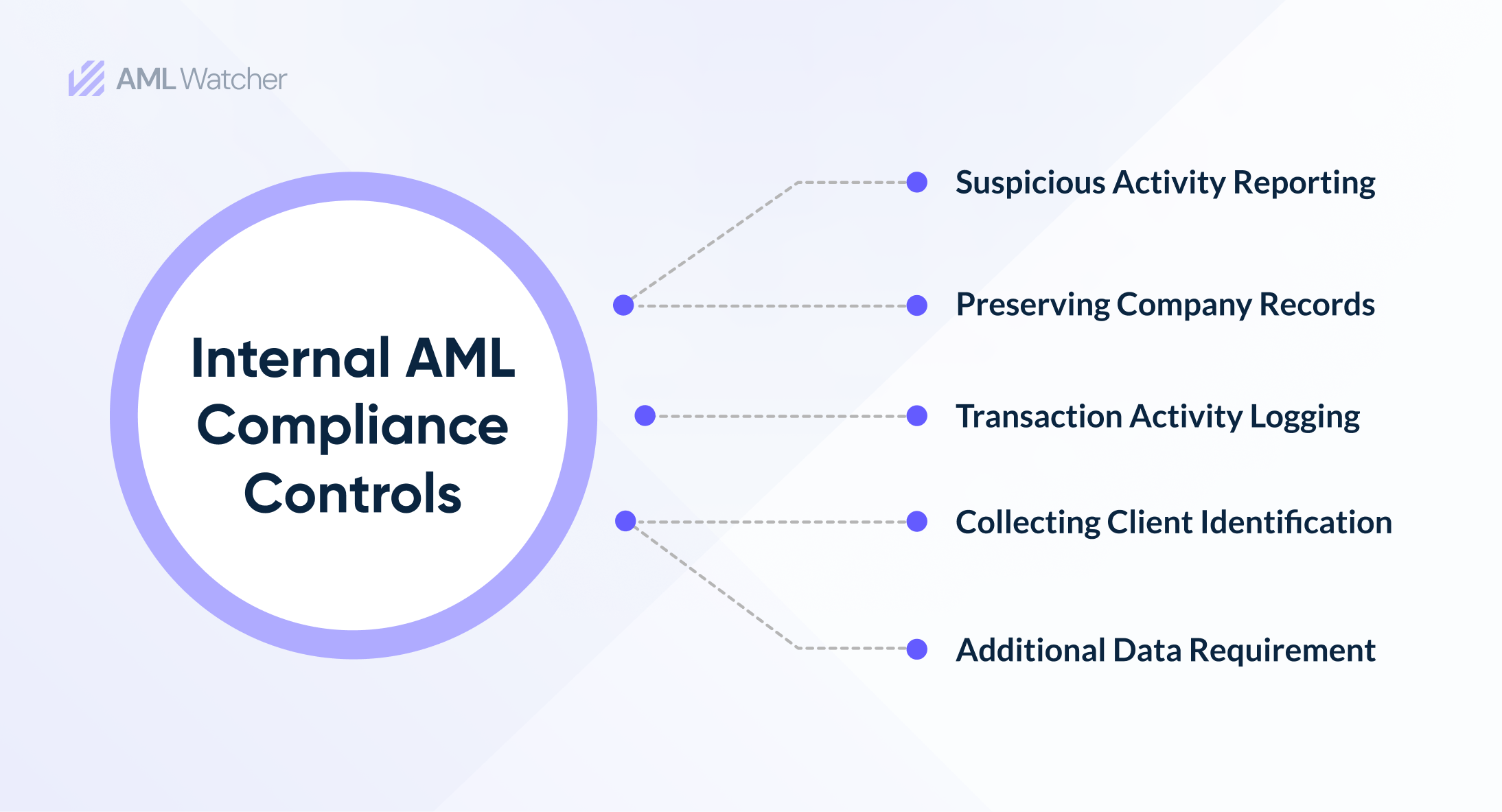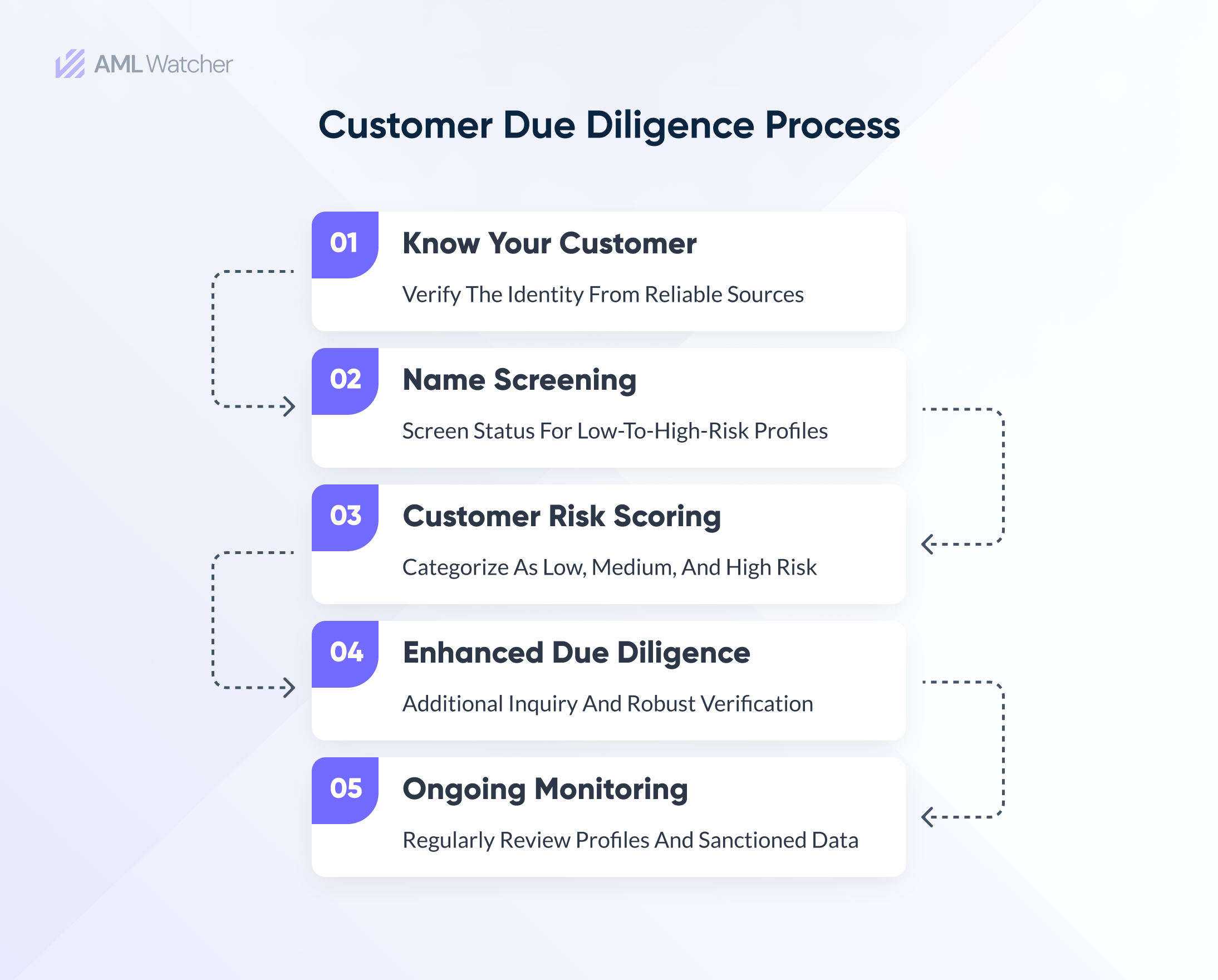
6 Key Components Of Effective AML Compliance Program

In today’s quickly changing financial landscape, money laundering prevention has become a top priority for regulatory agencies, financial institutions, and governments across the globe. One of the most prominent incidents where NatWest was fined £264 million for failing to prevent the routing of money for illicit activities. This includes taking the cash deposits that came in black bags from a person whose business consistently exceeded the projected operations This case highlighted the significance of financial institutions upholding strong AML Program and keeping an eye on odd transaction activities.
Creating an efficient AML compliance will help you avoid fines, but will also be beneficial since it will help you reduce financial crime’s overall effects. As per the latest study, fintech’s annual net revenue has lost 1.7% to financial frauds, which is about a $51 million figure. Progressing through the route of creating and implementing a sound AML compliance program is not as easy as it appears, it can be a complex and time-consuming activity. If you’re a compliance officer or enterprise leader in the technology sector who’s planning to start that process, these points are intended for you.
Continue reading as we delve into the realm of what is AML program, which would highlight how one can build a remarkable AML compliance program that follows regulation, leading to utilizing your resources and time efficiently, and importantly minimizing the risk of fraud and other financial crimes instantly.
What Is An Anti-Money Laundering Compliance Program?
“An anti-money laundering compliance program is an actionable set of policies and procedures performed by an organization to establish the structural framework for its compliance operations. In doing so, this AML Program lays down rules that will govern the work of internal risk and compliance teams and explain how to identify and fight money laundering in FIs.”
One of the key reasons for the issue of maintaining a seamless compliance program is the ever-changing rules and regulations. An institution’s compliance program must be individual in all respects such as it must be matched with the business needs of the entity and related to service, product, and clientele. It cannot be one-size-fits-all.
AML Compliance And Global Regulations
The Financial Action Task Force is in charge of creating and advancing worldwide standards for AML and counterterrorism financing. It upholds a collection of 40 recommendations that act as the standard for global AML regulation.
With the Bank Secrecy Act, financial organizations and institutions are obliged to make a BSA/AML program that minimizes the rate of money laundering, financial fraud, and the financing of terrorism. These policies are defined in FINRA Rule 3310 which has the minimum standards of operations and applies for compliance.
Furthermore, the new Anti-Money Laundering Act of 2020 has also increased penalties that it can impose on both individuals and financial institutions up to $1 million in fines — accompanied by potential prison sentences that infringe upon AML compliance rules.
The UK’s MLRS system obligates organizations to adopt robust AML systems to protect companies and customers from such crimes.
Let’s move forward and read how these AML compliance practices can benefit any institution and individual.
Why Is The AML Compliance Program Highly Significant?
AML compliance program forms the basis of the internal AML/CFT program of an organization within the overall organizational compliance management framework. Understanding AML procedures, policies, and regulations is the most important requirement for the business making an AML compliance program. It provides vital guidance for risk and compliance staff members on how they should properly exercise their duties while striving for a risk mitigation process and compliance with any regulatory requirement.
The key implications of ignoring to adopt a strong AML compliance program are:
Key Components For Effective AML Compliance
AML compliance, or anti-money laundering, refers to a collection of guidelines and protocols intended to stop, identify, and disclose money laundering within a company. The top six Best Practices to create an efficient AML compliance are:
Risk Assessment
Performing a thorough risk assessment is the most important step AML compliance program. Organizations must evaluate and verify all potential money laundering risks associated with their customers, products, services, and geographic locations. Hence, by understanding these risks, organizations can frame their AML strategies that are specifically tailored to tackle these issues.
Real Case: Recently, Citibank implemented an improved risk assessment procedure responding to authorities highlighting shortcomings in its prior methodology. As a result, they were better able to recognize and reduce any possible money laundering concerns related to their international operations.
Internal Policies and Procedures
The process of creating a written document of compliance and monitoring of Anti-Money Laundering is crucial at this stage. Such rules and regulations have to deal with a financial institution’s commitment to AML compliance, define the general responsibilities of employees, and detail ways to identify and report suspicious activities. Consistently reviewing and updating is an inevitable necessity to provide a basis for the changing regulatory environment as some of the risks are newly established ones.
Real Case: Deutsche Bank was penalized in 2023 for not following its own AML protocols, highlighting the significance of having regulations in place and adhering to them strictly.
Conduct Ongoing Monitoring
Implementation of a coordination strategy system for continuous monitoring of customers is a vital step. It includes developing automated systems that can raise alerts in case of possible irregularities or activities. The ongoing control procedure should be highly responsive, flexible, and diligent to identify and stop complex financial fraud schemes. Regulatory organizations such as FINRA have released 2023 updates that stress the need to have robust systems in place for keeping an eye on transactions and promptly reporting any suspicious activity to the appropriate authorities.
Real Case: In 2023, PayPal enhanced its transaction monitoring solution by utilizing AI capable of detecting suspects’ actions by 30%, which gives the possibility to increase the level of detection.
Customer Due Diligence
It is critical to build up a reliable CDD procedure for AML compliance. This includes screening customers’ risk profiles and tracking any possible transactions deemed unusual or suspicious. People who are considered high-risk, such as PEPs and citizens of countries with less supervision, should be given priority when implementing an enhanced AML/CFT program.
Real Case: In 2023, HSBC updated its CDD programs and received to reduce suspicious money laundering attempts. The scheme allegedly involved money laundering from high-risk clients.
Independent Audit And Review
Continuous AML compliance audits and monitoring help identify gaps or weaknesses. An audit by external auditors may be able to transparently review the program’s outcomes and provide recommendations on where the AML/CFT program can be improved. The audits allow organizations to identify gaps in their processes initiate measures to comply with regulations and strengthen their AML programs.
Real Case: Wells Fargo’s monitoring systems were immediately improved when an independent audit in 2023 found certain supervision deficiencies.
Employee Training And Awareness
An integral part of AML awareness is educating employees about the rules, the prevention mechanisms, and the new threats. Regular training events should be organized to guarantee employees are informed about the emergence of new threats and to stay updated with compliance standards changes. Creating an environment of alertness, which includes systems of reporting suspicious behavior, develops the chances of workers becoming active participants in the prevention of financial fraud and money laundering.
Real Case: In 2023, JPMorgan Chase launched a yearly AML training for all the employee groups in the world and the matter is a huge measure in reducing money laundering-related incidents.
These elements serve as the foundation of a strong AML compliance program, assisting businesses in both adhering to regulatory obligations and actively participating in the worldwide campaign against financial crimes.
Are you clear about the importance of AML systems? Let’s discuss some complexities of adopting up-to-date AML compliance processes.
New Developments And Challenges In AML
To adopt the most efficient and the latest compliance policies it comes with intricate challenges like,
Cryptocurrencies and Blockchain Technology
In recent times, the AML regime has been complicated by digital currencies, including Bitcoin, and by the invention of blockchain technology which makes low-profile transactions and cross-border money movement simpler. Regulators need to come up with strategies that match these new risks.
Cross-Border Money Laundering Activities
International money laundering practices are hard to trace because they offer locations for the involvement of multiple jurisdictions and financial systems across borders. International collaborations and information exchange are essential for this problem not to be traced.
Fintech And Regtech Advancements
Fintech and Regtech innovation have been the major drivers for the transformation of the finance market and opening new doors for the AML Program. The application of AI-enabled transaction monitoring is just one example of the creative measures created to detect money laundering and combat it.
Implementation Of Global AML Standards
However, it is considered a tough task for the entire world to share similar standards concerning the BSA/AML program, since many countries have different AML law frameworks and regulations. Bringing these rules into complete harmony to form a common and equal battle against money laundering would be necessary.
Amalgamation Of AI & ML In AML
Artificial intelligence and machine learning contain technological solutions for achieving better screening effectiveness by automation and improving risk assessment accuracy. These irrevocably alter privacy in a digital age and pose ethical issues regarding technology.
To end this all, an efficient AML Program is an effective tool to preserve the integrity of financial institutions and the global economy in the face of a constantly changing financial crime landscape. Organizations may strengthen the financial system against criminal exploitation and fight money laundering by putting these safeguards in place. Cross-border money laundering operations, technology breakthroughs, and the requirement for international cooperation are some of the persistent possibilities and challenges that define the AML landscape.
To solve these problems and provide a more secure financial environment, governments, financial institutions, and regulators must collaborate. By working together, we can make the future of international finance more transparent and safe.
AML Watcher is the growing sanction screening provider that aims to offer the most recent and accurate sanctioned information to streamline your AML compliance efforts with recurring regulations. You can utilize the platform to find updated data on sanction lists, politically exposed person lists, international leaks, watchlists, and more to conduct quick due diligence and locate all ownership information in a single search to identify potential risks.
At AML Watcher we provide a range of solutions to make your AML compliance program more reliable and perfect, including customer risk assessment, biometric screening, ongoing monitoring, name screening, and customized risk scoring.
Our AI-backed AML screening solutions meet market demands and offer a scalable and efficient AML compliance solution that adheres to all international regulatory compliance.
Feel free to contact us to learn more about the special characteristics of our AML solution or you can also go for our open search solution to receive instant and reliable information about any international entity.
Related Articles
We are here to consult you
Switch to AML Watcher today and reduce your current AML cost by 50% - no questions asked.
- Find right product and pricing for your business
- Get your current solution provider audit & minimise your changeover risk
- Gain expert insights with quick response time to your queries


 Compliance Guidelines:
Canada
Compliance Guidelines:
Canada
 Compliance Guidelines:
Australia
Compliance Guidelines:
Australia
 Donald Trump convicted on all 34 counts at the Hush Money Trial
Donald Trump convicted on all 34 counts at the Hush Money Trial
 How Gambling Sector Can Use Data Tools to Comply with...
How Gambling Sector Can Use Data Tools to Comply with...
 How Compliance With Cyber Sanctions Help Firms Avoid...
How Compliance With Cyber Sanctions Help Firms Avoid...
 Current Use Cases of AI Technology in the AML Compliance
Current Use Cases of AI Technology in the AML Compliance
 How Cyber Security Threats impact AML and Fraud?
How Cyber Security Threats impact AML and Fraud?
 How El Chapo's Drug Cartel Facilitated Money Laundering?
How El Chapo's Drug Cartel Facilitated Money Laundering?
 Money Laundering Tactics Inspired by Money Heist
Money Laundering Tactics Inspired by Money Heist






